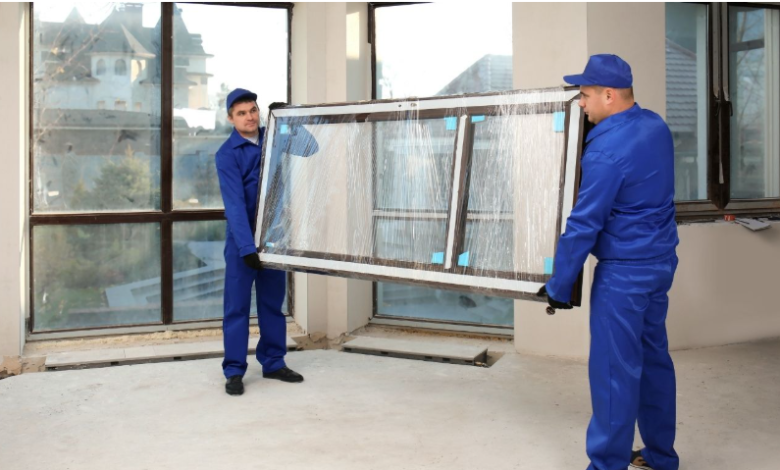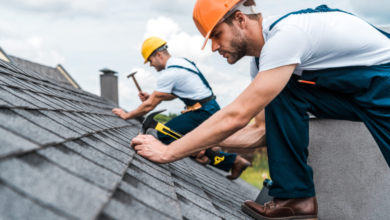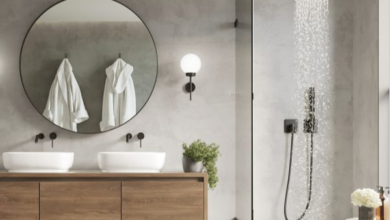Invest Wisely with Best Siding Replacement Companies Today

When it comes to maintaining or upgrading the exterior of your home, siding is one of the most essential components. Not only does it protect your property from harsh elements, but it also enhances curb appeal and boosts overall home value. Choosing the best siding replacement companies is a decision that goes beyond cost; it requires considering experience, quality, reliability, and long-term performance.
This article provides a detailed guide on why investing in top-tier siding replacement services is a wise decision. It will also help homeowners understand the benefits, material choices, installation process, and criteria for selecting a siding company.
Why Replacing Siding Is a Smart Home Investment
Protection Against Weather Damage
Siding acts as a shield, guarding your home against rain, wind, snow, and sun. Over time, weather exposure wears down siding materials, making replacement essential to maintain the structural integrity of your home.
Boosting Energy Efficiency
Old or damaged siding often leads to air leaks and reduced insulation. By working with the best siding replacement companies, you ensure proper installation and material selection, which significantly improves your home’s thermal performance.
Enhancing Curb Appeal and Property Value
New siding instantly refreshes the appearance of your home. It signals to prospective buyers that the property is well-maintained and energy-efficient, often leading to higher resale value.
See also: How to Create Engaging Content Using AI Face Swap Technology
What the Best Siding Replacement Companies Offer
High-Quality Materials
Top-rated siding contractors offer a variety of premium materials, including:
- Vinyl siding: Cost-effective and low-maintenance.
- Fiber cement siding: Durable and resistant to fire, pests, and rot.
- Wood siding: Offers a classic look but requires maintenance.
- Engineered wood siding: Combines aesthetics with strength.
- Metal siding: Excellent for modern looks and fire resistance.
Certified and Trained Technicians
The best siding replacement companies employ experienced professionals trained in current installation practices, safety standards, and building codes.
Custom Design Consultations
These companies often provide personalized consultations to help you choose colors, textures, and materials that best complement your home.
Warranty and Post-Installation Support
Top-tier contractors offer comprehensive warranties covering both materials and labor. Post-installation services ensure peace of mind and lasting results.
Key Benefits of Hiring the Best Siding Replacement Companies
Increased Longevity
Premium siding products and professional installation techniques result in longer-lasting results, often exceeding 20–30 years with minimal upkeep.
Structural Soundness
Proper installation prevents moisture intrusion, mold growth, and other structural problems that can arise from poorly installed siding.
Reduced Maintenance Costs
High-quality materials installed correctly require less frequent repairs and cleaning, saving homeowners money in the long run.
Time-Efficiency
Experienced companies complete siding projects more efficiently, reducing disruption to your daily life.
Choosing the Right Siding Material for Your Home
Climate Considerations
Your local climate should influence your choice of siding. For example, fiber cement and vinyl perform well in various climates, offering durability and insulation.
Aesthetic Goals
Different siding materials provide distinct looks. Wood delivers a traditional aesthetic, while metal and fiber cement can offer modern and clean lines.
Budget and ROI
While some materials may have higher upfront costs, their durability and energy efficiency often lead to better long-term returns.
Step-by-Step Guide to the Siding Replacement Process
1. Initial Consultation
A professional contractor will evaluate your home, discuss goals, and recommend suitable materials based on your budget and preferences.
2. Property Inspection
The team examines the structural condition of your home and identifies potential issues like water damage or rot that need to be addressed.
3. Material Selection
Choose your siding type, color, and design features, ensuring they align with your home’s style and environmental needs.
4. Preparation and Removal
Old siding is removed, and the surface is prepped, which may involve replacing insulation or sheathing.
5. Installation
New siding is installed meticulously to prevent gaps, leaks, or future issues. All work adheres to local building codes.
6. Final Inspection
Once the installation is complete, the contractor performs a thorough inspection to ensure quality and satisfaction.
Common Mistakes to Avoid During Siding Replacement
Hiring Based on Price Alone
Choosing the cheapest contractor may lead to subpar materials and workmanship. Focus on value, not just price.
Ignoring Warranties
A lack of warranty leaves you vulnerable to unexpected repair costs. The best siding replacement companies always provide strong warranty coverage.
Poor Communication
Ensure your contractor communicates clearly about timelines, materials, and any changes to the plan.
Overlooking Reviews and References
Always check online reviews, testimonials, and references before hiring any company.
Tips for Finding the Best Siding Replacement Companies
Check Credentials
Make sure the company is licensed, insured, and certified by relevant industry organizations.
Request a Portfolio
Review past projects to evaluate the quality and diversity of their work.
Compare Estimates
Obtain multiple quotes and compare them not just by price but by value, service scope, and materials offered.
Ask Questions
Inquire about the installation timeline, clean-up process, potential disruptions, and payment terms.
Environmental Benefits of Modern Siding
Sustainable Material Choices
Many siding materials today are made from recycled or sustainable sources, reducing environmental impact.
Energy Conservation
Proper siding installation can cut energy consumption by improving home insulation.
Waste Reduction
Durable siding leads to fewer replacements, which reduces landfill waste over time.
Maintenance Tips After Siding Replacement
Regular Inspections
Examine your siding annually for cracks, gaps, or warping.
Cleaning
Use mild detergent and water to clean the surface and remove mold or debris.
Re-Sealing or Painting
Depending on the siding type, occasional re-sealing or repainting may be necessary to maintain appearance and protection.
Prompt Repairs
Address any damage quickly to avoid bigger issues.
Frequently Asked Questions
How long does new siding typically last?
Depending on the material and maintenance, siding can last 20 to 40 years or more.
Are permits required for siding replacement?
Yes, most regions require building permits. Your contractor should handle the paperwork.
How much does siding replacement cost?
Costs vary based on material, home size, and labor, but average between $8,000 and $25,000.
Can I install siding myself?
DIY siding is possible but not recommended unless you have experience, as improper installation can cause significant issues.
When is the best time to replace siding?
Spring and fall offer the best weather conditions for siding installation.
Conclusion
Investing in your home’s exterior with the help of the best siding replacement companies ensures long-term durability, energy efficiency, and aesthetic appeal. From material selection and professional installation to post-project maintenance, top-rated contractors bring value and peace of mind to homeowners.
Make an informed decision, compare multiple options, and don’t settle for less when it comes to protecting one of your most valuable assets—your home. With the right siding and the right team, you can enjoy a beautiful, energy-efficient home for years to come.





